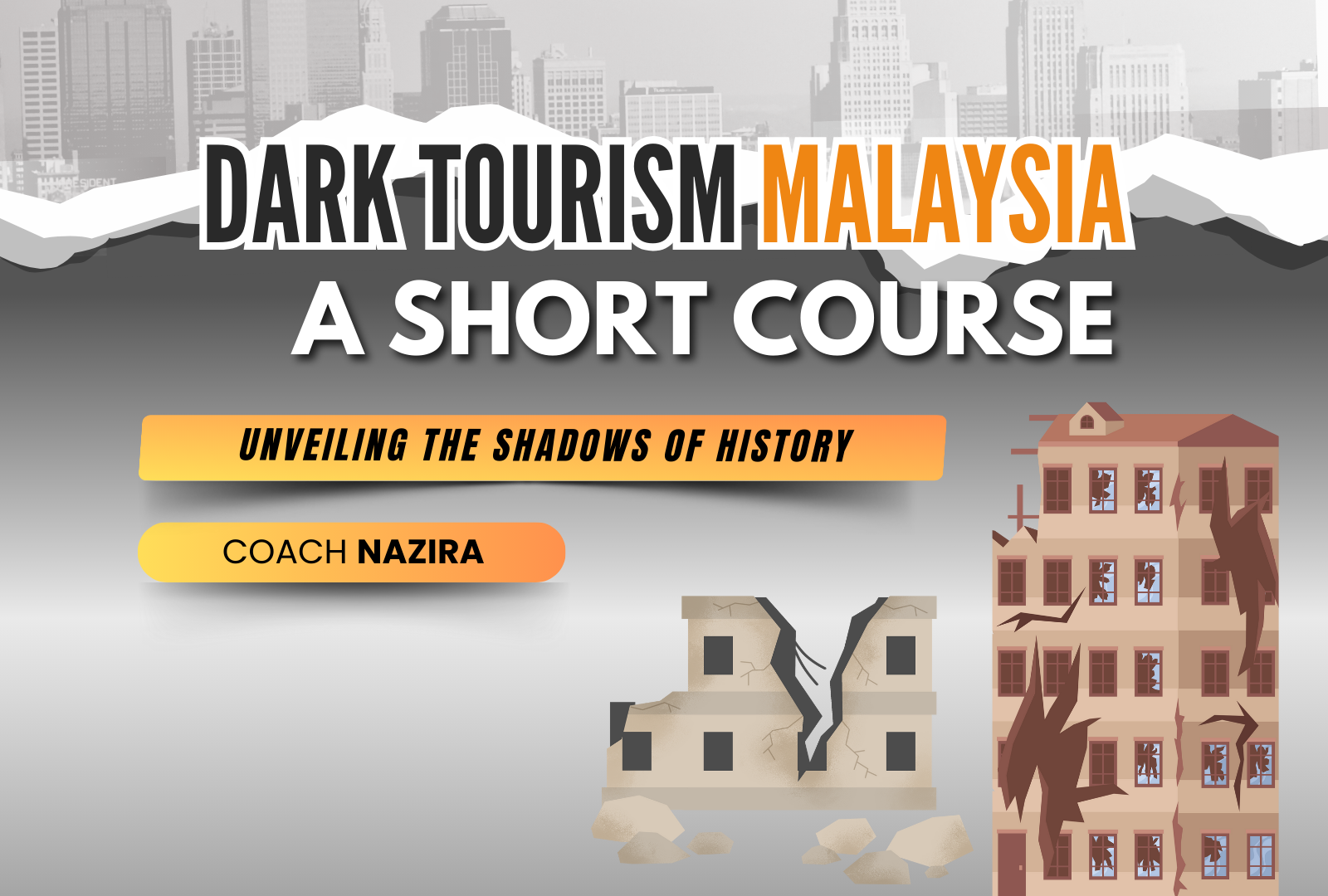
Chapter 1: Introduction to Dark Tourism in Malaysia
1.1 Understanding Dark Tourism
Formal Explanation:
Dark tourism, also referred to as thanatourism, is the act of visiting locations associated with death, tragedy, and historical suffering. The term was introduced by Lennon and Foley (2000), who examined how travelers are drawn to places linked to human mortality. These sites may include war memorials, abandoned buildings, crime scenes, and locations tied to natural disasters.
Malaysia offers a rich selection of dark tourism sites shaped by colonial rule, wartime events, and local folklore. Landmarks such as the Sandakan Death March trail, Pudu Jail, and Kellie’s Castle serve as silent witnesses to forgotten stories. These locations invite visitors to step beyond conventional tourism and engage with history in a thought-provoking manner.
1.2 The Psychology Behind Dark Tourism
Formal Explanation:
Psychologists have long studied why individuals are drawn to dark tourism. Some of the most common motivations include:
- Historical Awareness – Seeking knowledge about past events.
- Emotional Reflection – Understanding human resilience and paying tribute to victims.
- Thrill-Seeking – The excitement of exploring haunted places or crime scenes.
- Media Influence – Films, books, and social media spreading awareness of dark tourism sites.
1.3 Ethical Considerations in Dark Tourism
Formal Explanation:
While dark tourism can be an eye-opening experience, it also raises ethical concerns. Visitors must ensure that their curiosity does not come at the expense of respect.
Key ethical principles in dark tourism include:
- Respect for the Site – Avoid disruptive behavior or inappropriate photography.
- Cultural Sensitivity – Recognize that some communities may see these places as sacred or painful.
- Preservation Efforts – Avoid causing damage to historical landmarks.
At the Batang Kali Massacre Memorial, a small stone plaque marks the site where 24 villagers were executed in 1948. Family members still visit, laying flowers and offering silent prayers. But alongside them, tourists sometimes pose for selfies—unaware or indifferent to the grief that still lingers here.
A similar debate arose at Pudu Jail, where a mix of urban explorers and ghost hunters once roamed before its demolition. Was it a historical landmark that should have been preserved, or had it become just another backdrop for sensationalized ghost stories?
1.4 Dark Tourism in Malaysia: A Growing Trend
Formal Explanation:
Dark tourism in Malaysia is gaining traction due to increasing public curiosity and media exposure. Several factors contribute to its rise:
- Social Media & Documentaries – The spread of stories online attracts new visitors.
- Rise of Experiential Tourism – More travelers seek immersive historical experiences.
- Government & Private Sector Initiatives – Efforts to preserve and promote these sites.
Despite growing interest, Malaysia’s dark tourism industry remains in its early stages compared to countries like Japan (Hiroshima Memorial) or Poland (Auschwitz). The challenge lies in balancing public engagement with historical preservation.
Interactive Quiz: Test Your Knowledge!
📝 Section 1: Understanding Dark Tourism
What is the definition of dark tourism?
A) Visiting amusement parks
B) Traveling to places associated with tragedy or death
C) Exploring only haunted locations
D) Participating in extreme sports
Which of the following is NOT an example of dark tourism?
A) Visiting a war memorial
B) Exploring a natural disaster site
C) Attending a music festival
D) Touring an abandoned prison
💭 Section 2: Ethics in Dark Tourism
Why is it important to be respectful at dark tourism sites?
A) To avoid legal trouble
B) To honor the history and people affected
C) To make a good impression on social media
D) To ensure better lighting for photography
What is one common ethical concern related to dark tourism?
A) Sites becoming too educational
B) Disrespectful behavior from visitors
C) Lack of commercial souvenirs
D) Dark tourism being too affordable
🔎 Section 3: Malaysia’s Dark Tourism Locations
Which Malaysian site is linked to World War II history?
A) Villa Nabila
B) Highland Towers
C) Sandakan Death March Trail
D) Bukit Besi
What happened at the Batang Kali Massacre Memorial?
A) A volcanic eruption
B) A tragic flood
C) The execution of 24 villagers
D) The discovery of ancient ruins
🧠 Bonus Reflection Question:
If you could visit one dark tourism site in Malaysia, which would it be and why?
Conclusion
Dark tourism invites travelers to explore history through an unconventional yet meaningful lens. Whether standing in the ruins of an abandoned prison or retracing the steps of war prisoners, each location holds a story worth telling.
As interest in Malaysia’s dark tourism grows, so does the responsibility to preserve and honor these sites. The line between curiosity and respect is a delicate one—and as visitors, it is up to us to navigate it with care.

